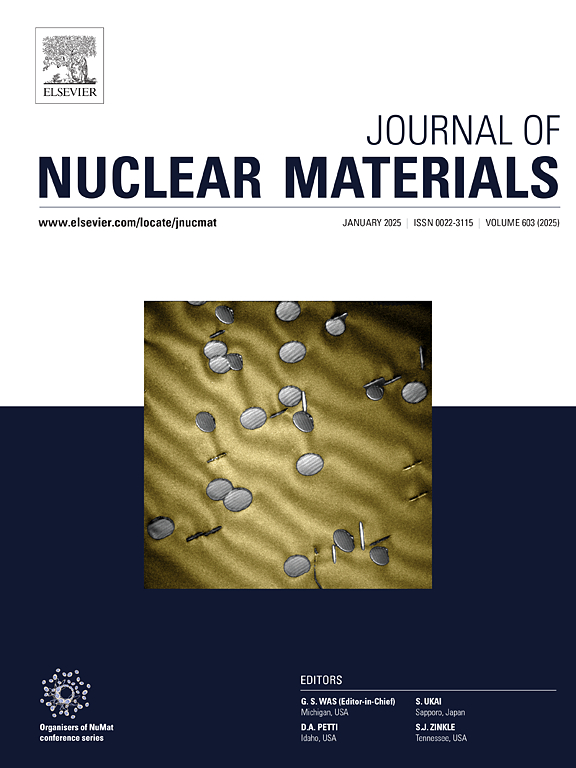Understanding and removing FIB artifacts in metallic TEM samples using flash electropolishing
IF 2.8
2区 工程技术
Q3 MATERIALS SCIENCE, MULTIDISCIPLINARY
引用次数: 0
Abstract
Focused ion beam methods have often become a de facto choice for metallic materials that could also be easily electropolished. FIB preparation of TEM samples is widely used for radioactive materials, since the site specificity, coupled with the minuscule volume of material used for the TEM sample, can produce TEM samples with minimal to no detectable radioactivity. FIB preparation has problems however, as evidenced by artifacts such the subsurface black spots (clusters of vacancies and/or interstitials), dislocations, amorphous layers and phase changes, and must be accounted for when conducting TEM experiments. This study has two main objectives, first, presenting evidence on two types of surface artifacts (moiré fringes and surface dislocations) observed in FIB prepared Fe-Cr alloys and pure Fe. This evidence will include similar artifacts produced in ferritic based systems using two other ion sputtering techniques: conventional Ar+ ion milling with a Gatan PIPS®, and an Ar+ based Fischione NanoMill®. The second objective documents our method of removing all of the FIB artifacts using flash electropolishing (FEP) of FIB TEM lamella, demonstrating our success in producing electropolished FIB lamella from an FeCr HT-9 alloy free of both the subsurface and surface artifacts. With the proper choice of parameters, TEM samples from FeCr alloys are comparable to those prepared by jet polishing of bulk TEM samples. These comparisons between FIB prepared and FEP FIB samples are done using both TEM imaging and diffraction contrast imaging STEM (DCI-STEM) on samples from an unirradiated and neutron irradiated Fe-Cr alloy. The observed black spot damage, moiré fringes and surface dislocations in the ion beam prepared samples are discussed in terms of how they could impact the microstructural analysis of irradiated metals.

求助全文
约1分钟内获得全文
求助全文
来源期刊

Journal of Nuclear Materials
工程技术-材料科学:综合
CiteScore
5.70
自引率
25.80%
发文量
601
审稿时长
63 days
期刊介绍:
The Journal of Nuclear Materials publishes high quality papers in materials research for nuclear applications, primarily fission reactors, fusion reactors, and similar environments including radiation areas of charged particle accelerators. Both original research and critical review papers covering experimental, theoretical, and computational aspects of either fundamental or applied nature are welcome.
The breadth of the field is such that a wide range of processes and properties in the field of materials science and engineering is of interest to the readership, spanning atom-scale processes, microstructures, thermodynamics, mechanical properties, physical properties, and corrosion, for example.
Topics covered by JNM
Fission reactor materials, including fuels, cladding, core structures, pressure vessels, coolant interactions with materials, moderator and control components, fission product behavior.
Materials aspects of the entire fuel cycle.
Materials aspects of the actinides and their compounds.
Performance of nuclear waste materials; materials aspects of the immobilization of wastes.
Fusion reactor materials, including first walls, blankets, insulators and magnets.
Neutron and charged particle radiation effects in materials, including defects, transmutations, microstructures, phase changes and macroscopic properties.
Interaction of plasmas, ion beams, electron beams and electromagnetic radiation with materials relevant to nuclear systems.
 求助内容:
求助内容: 应助结果提醒方式:
应助结果提醒方式:


